Welcome
For those that are new here: thank you for subscribing.
I'm an architectural photographer. I travel around Britain recording and interacting with special places that have a spirit about them. I work from my camper van called Woody and I share my experiences via this digest.
⚡️ Missed the last digest? Here it is.
⚡️ View the digest archive here.
I love to hear your comments and feedback. Email me from here.
Thank You.

I'd just like to say thank you to those that contacted me after last week's digest where I talked about my anxiety about membership.
I said in the Observation section that when I'm capturing the beauty of an inspiring location through my lens, I can't help but think that Woody, my camper van, isn't powered by electric and diesel, but by your membership subscriptions.
Thank You.
Andy.

Tomb of a Roman standard bearer situated at the bottom of the night stair at Hexham Abbey.
"The notion of an absolute originality … is an absurdity. A man cannot escape in thought, any more than he can in language, from the past and the present. Originality consists in the power of digesting and assimilating thoughts so that they become part of our life and substance."
Edgar Wood, Address to the Manchester Society of Architects.

From Edinburgh I take a circuitous route down the east of Scotland through Flodden, into England, skirting Alnwick and finally to my destination, Durham.
I visit the cathedral late on in the afternoon when things are a little quieter. It’s there that I’m mesmerised by the arcading in the Galilee chapel. I can’t put my finger upon it at first, but the pattern and syncopation of the arcading tugs up a memory from my teenage years - a place with a similar style - the Alhambra. These kind of connections light up something inside.
I think that this visual and connective way of observation might be a bi-product of my job, where thousands of thousands of patterns and styles have been embossed upon my memory through my lens.
Made me think of the Islamic architecture in Southern Spain pic.twitter.com/r8XnrrcePg
— Ali Harman 🌍💙 mastodonapp.uk/@aliharmsn (@nemonemonemo) October 27, 2022
"I think that this visual and connective way of observation might be a bi-product of my job, where thousands of thousands of patterns and styles have been embossed upon my memory through my lens."
Recently, during a visit to the Manchester Museum, I came across a sculpture of Bodhisattva which struck a chord with me in the same way as the arcading at Durham. Again I had a memory of seeing something similar. Scrolling through my gallery of images I found a photo of the Anglo Saxon Christ in Majesty from Barnack. Both sculptures, in terms of their origins, are poles apart, but have similar visual cues and patterns. In this context, at least, they are connected.

The visuals instigate an intriguing path of enlightenment. The Bodhisattva is from the period between 100-300BC from ancient Gandhara (in modern day north-west Pakistan and eastern Afghanistan) which was located along the Silk Road, a melting pot of cultures with direct links to Greece, Asia and China. It represents a being on the threshold of attaining enlightenment who chooses to delay becoming a Buddha in order to help others. Similarly, the Christ sculpture is a god made human to help the salvation of mankind. Their forms are also strikingly similar: rotund bellies, flowing dress, their hands held up in gestures of blessing and fearlessness. The Christ in Majesty forms part of a genre that harks back to the Byzantine style. Both the Bodhisattva and the Christ sculpture have been influenced by Greco-Roman antiquity. Perhaps more powerful than that is the innate conformity to Fibonacci and the golden section that ties the two epochs together.
These patterns are telling in their own right - they tell us of a melting pot of cultures. They tell us of association, assimilation and diversity, and they connect the vast stream of human consciousness that flows through these objects.
I think of the things that I have come across that can be connected visually: the hybrid gods found in the ancient burial chambers of Egypt and the foliate heads that adorn our cathedrals.

I think of the hieroglyphics of the pyramids and the apotropaic in the church.

Moving forward in time like a giant glacier, our material culture is continuously pushing forth to the present materials, textures, details and texts that have the power to move and inform us. What’s left beyond the surviving stone and mortar is a form of cultural moraine that has the latent power to avoid our bias and connect with us emotionally.
I’m reminded of Lily Bernheimer’s words in her book: The Shaping of Us :
“The usability of the casement window, the beauty of Venice, and the durability of ancient stone walls are achieved thanks to the small and repeated contributions of many people over many years. We love old buildings because they envelop us in patterns we understand intuitively.”
Like the imprint of sand left behind by the receding tide, our absence etches patterns of meaning that linger long after we're gone.
What is surprisingly powerful in all of this is that if we listen to our intuition and cultivate ways of seeing that are observational and connective, we have an antidote to the algorithm and the fake news, the polarisation and the distrust of modern times. There’s a tried, tested and locked-in wisdom in the ‘small and repeated contributions of many people over many years’ that can provide a countermeasure to our present woes.
I’m not naive, and I do understand that human interaction has been governed by conflict as much as cohesion, as I’m reminded by the Flavinus tombstone at Hexham Abbey: a Roman standard bearer kicking a Briton — but even when I look at that message, I find in the golden section and the pattern that lies beneath, a salient reminder that our vast repository of material culture mirrors an innate and incorruptible aspect of humanity that thrives on cohesion and common ground.

Durham Cathedral
Several years back my doctor told me that I had a hernia that might have been exacerbated by carrying my heavy kit up spiral staircases.
Just after the op for the hernia, when I came to, I was told that after a few puffs of the pre-op anaesthetic, I shouted out the words: “Durham Cathedral!”
The cathedral is a lodestar in my quirky world.
It is a structure of great strength that is softened with the spirit of sanctuary. The sanctuary knocker is well known, less so the nave vaulting that might be the ‘g’ of the gulp that is Gothic. St. Denis in Paris is a rival for that title, but maybe, just maybe, Durham is the start of all things Gothic.
Behind the cathedral is the North and South Bailey - with delightful vernacular buildings. It leads down to the river with that classic view of the cathedral across the weir.
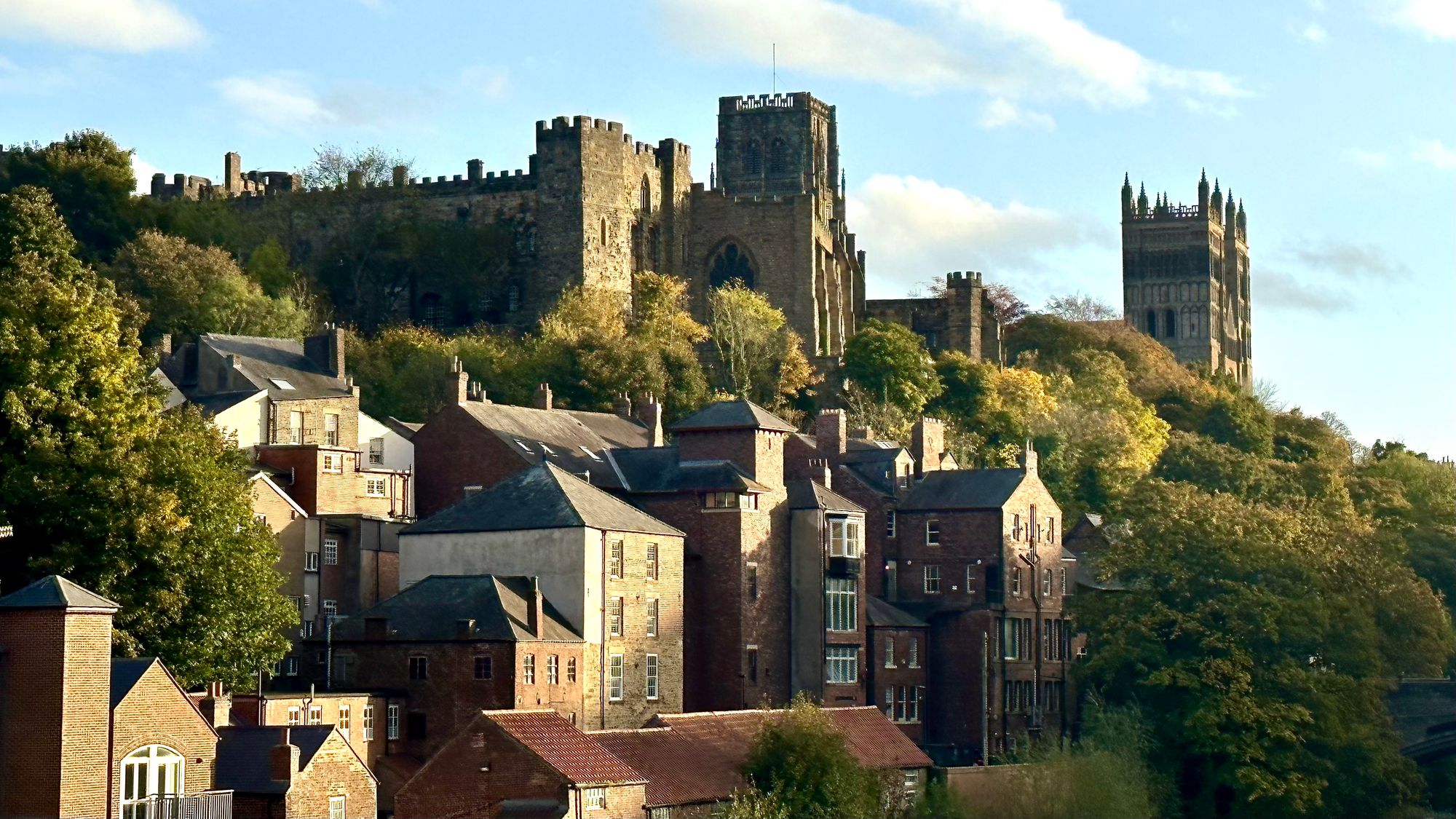

The Galilee Chapel
If this chapel were not attached to Durham Cathedral, it would be regarded as a separate wonder on its own. It houses the tomb of the Venerable Bede and is adorned with art from my guru architect, George Pace.
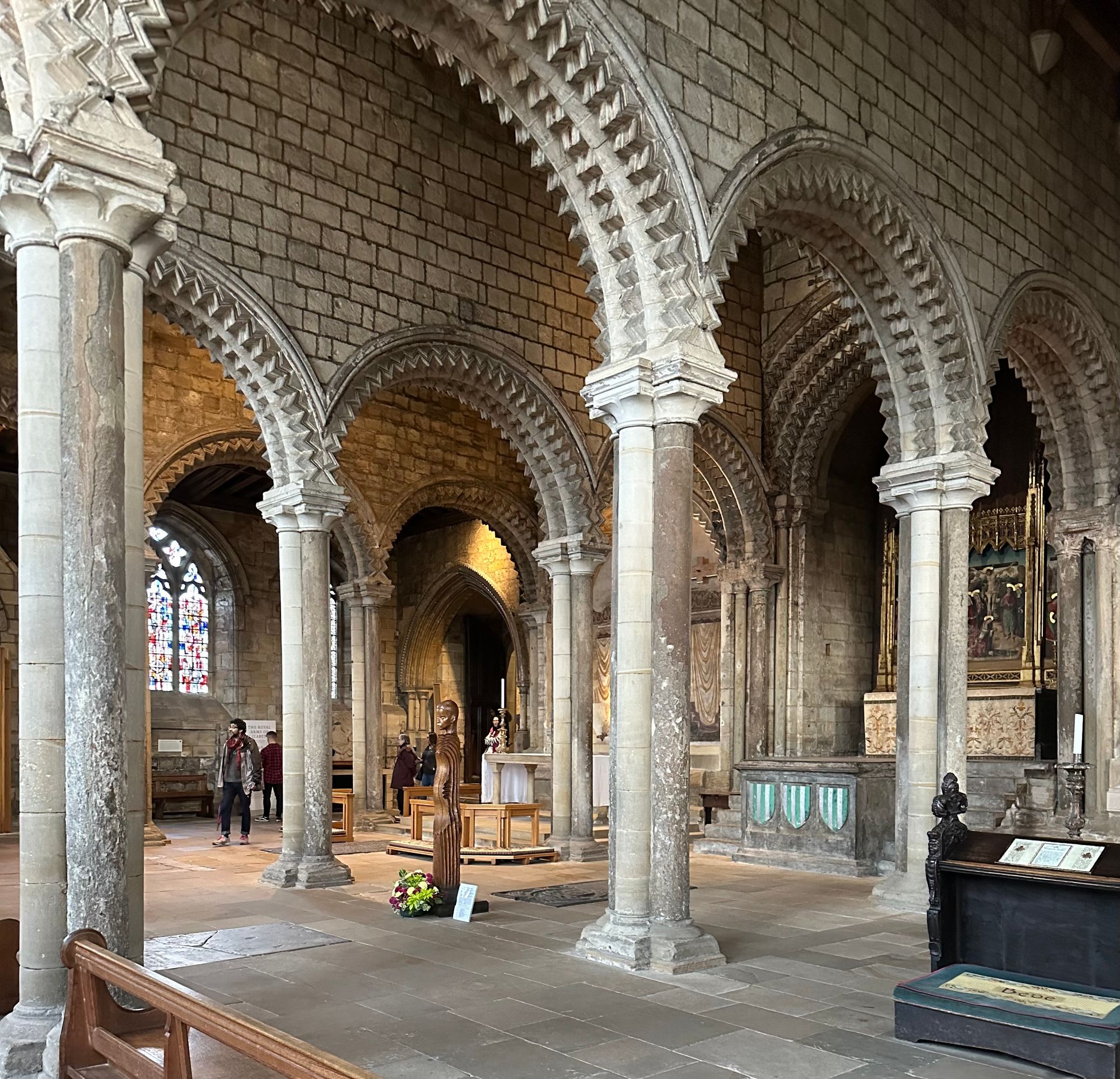
It was originally built as a Lady Chapel in the late C12th.
I hark from a town called Middleton in Greater Manchester, and another son of that town, Thomas Langley -who was Bishop of Durham (also Bishop of York, Lord Chancellor to three kings and Britain's first foreign minister) - refurbished the roof and added the fenestration. He is buried in the Galilee chapel, and the three green striped shields in the photo above are part of the Middleton coat of arms.




Bede's resting place.




The words at the back of Bede's tomb are designed by George Pace - in a similar font to those at Llandaff Cathedral (see pic below) - the Durham words say:
‘Christ is the morning star who when the night of this world is past brings to his saints the promise of the light of life and opens everlasting day.’


Left Durham, Right Llandaff

Durham Catheral: the nave
The nave at Durham was inspired by the scale and proportions of St. Peter's in Rome - the cathedral is only 70cm longer that St. Peter's.







The patterned columns (in particular the spiral pattern) replicated the Solomonic columns around St. Peter's shrine.


At Durham we are witnessing the white hot act of Gothic. Unfurling out of the heavy rounded arch of the Romanesque is the pointed arch. It occurs in the vaulting over the columns - it's one of the first occurrences in the world.


The Pelican Lectern
The lectern is a treasure that is often overlooked by visitors.
It has a remarkable history. A medieval pelican lectern is recorded in the Rites of Durham of the 1590's, but it was lost during the English Civil War. This lectern was designed by Sir George Gilbert Scott using the Rites as source inspiration. It is bronze, and was made by the celebrated metalworker Francis Skidmore.
The pelican is a symbol of Christ's sacrifice - here it is feeding its young its own flesh.
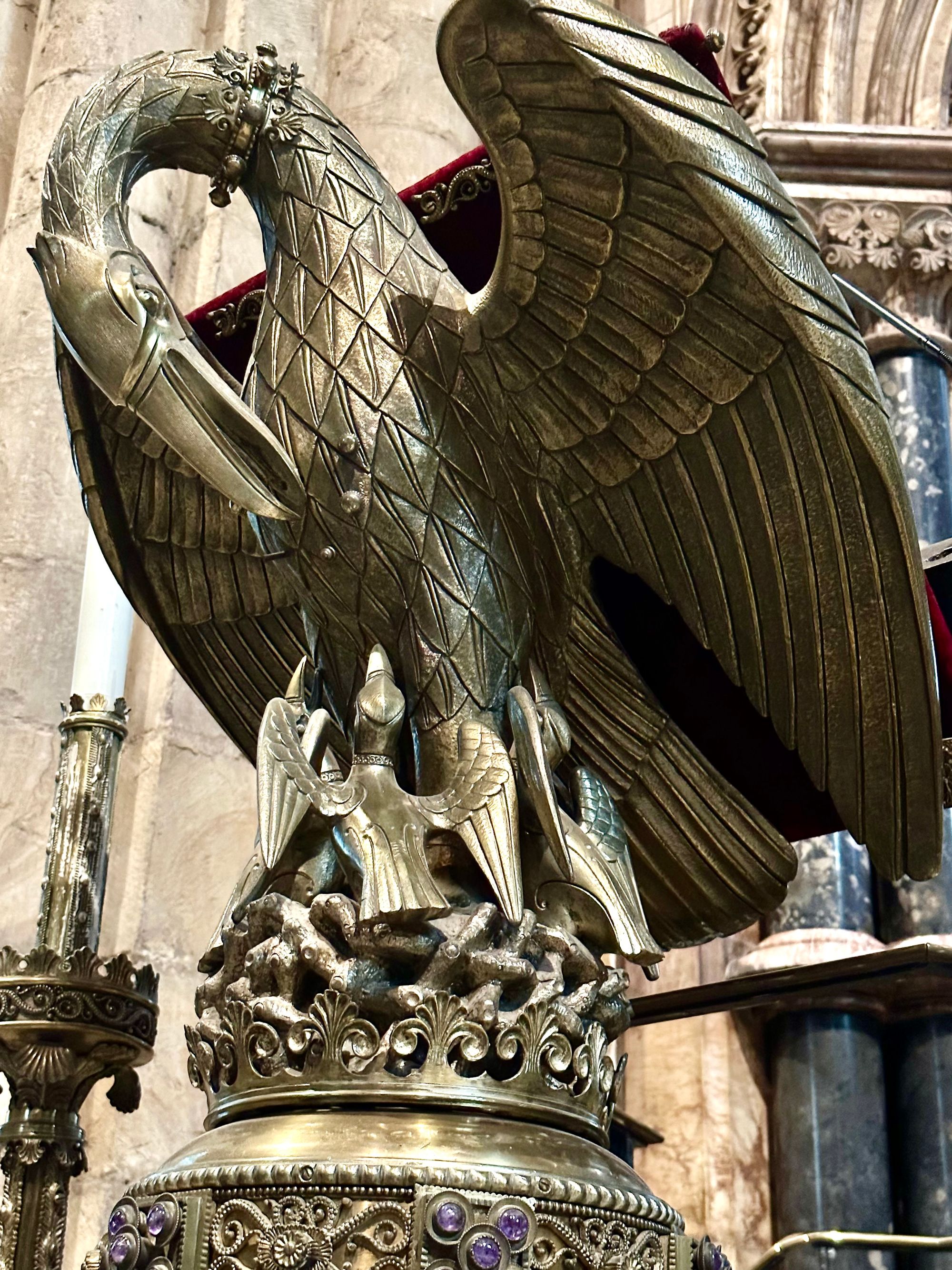
Members can see a full gallery of Pelican carvings (and read about their significance) by clicking the box below: (sign in & check your spam folder for security email).

Click here if you're interested in Membership.
I couldn't help but notice these Purbeck marble columns on the way to St. Cuthbert's shrine. Embedded inside are fossils from the Jurassic.


The shrine of St. Cuthbert.


A walk along The Bailey, Durham - no words: Pure Scroll
For the walkers and the psychogeographers:
To get to the North and South Bailey walk through the cathedral close and under the gateway. Check out the bell ringers rope on the porter's door - used as a head guard, and then take a right down South Bailey - go all the way to the river, across the bridge and turn right until you see one of the finest views of Durham Cathedral across the weir.
Each building has a story to tell...






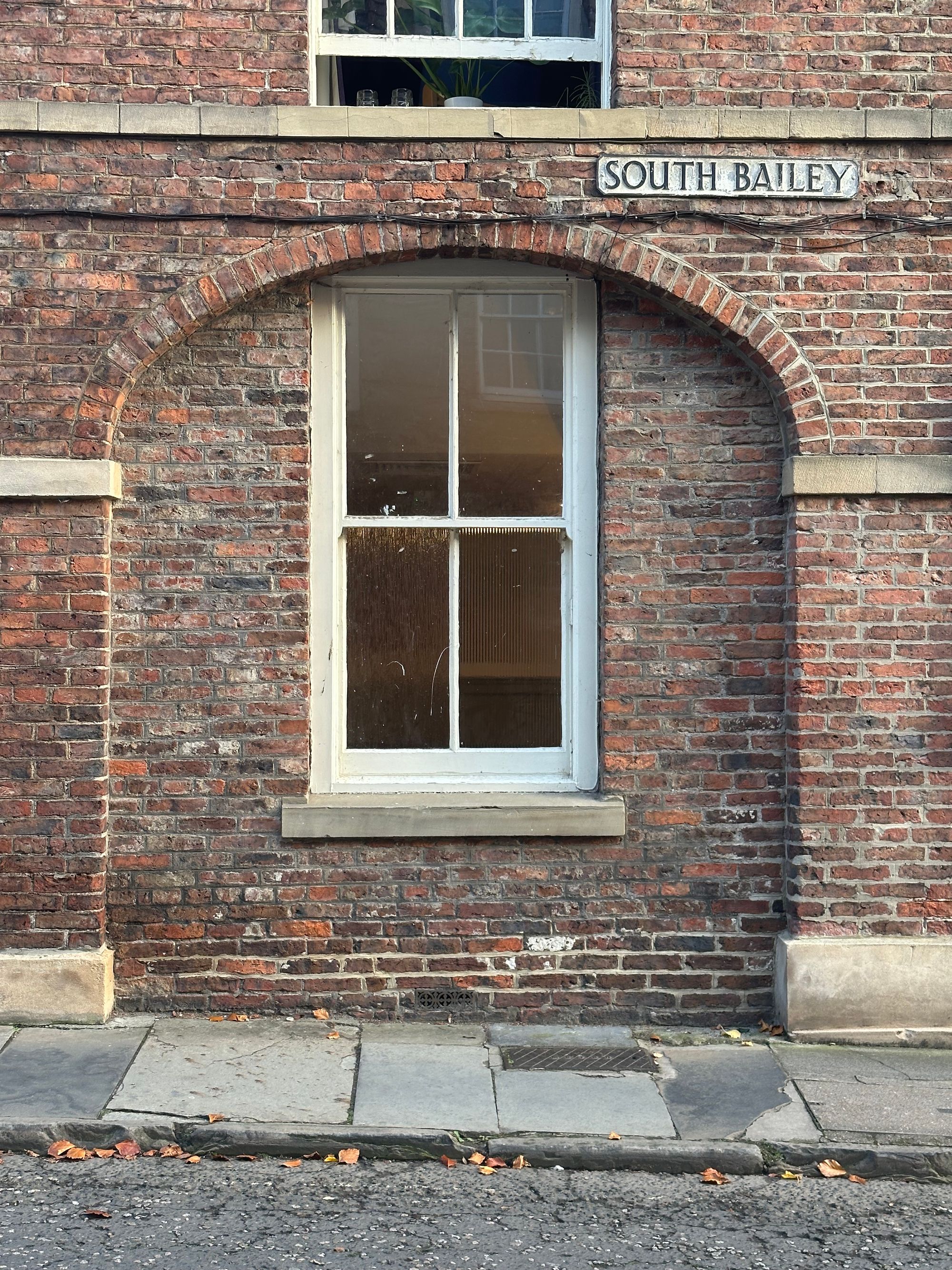

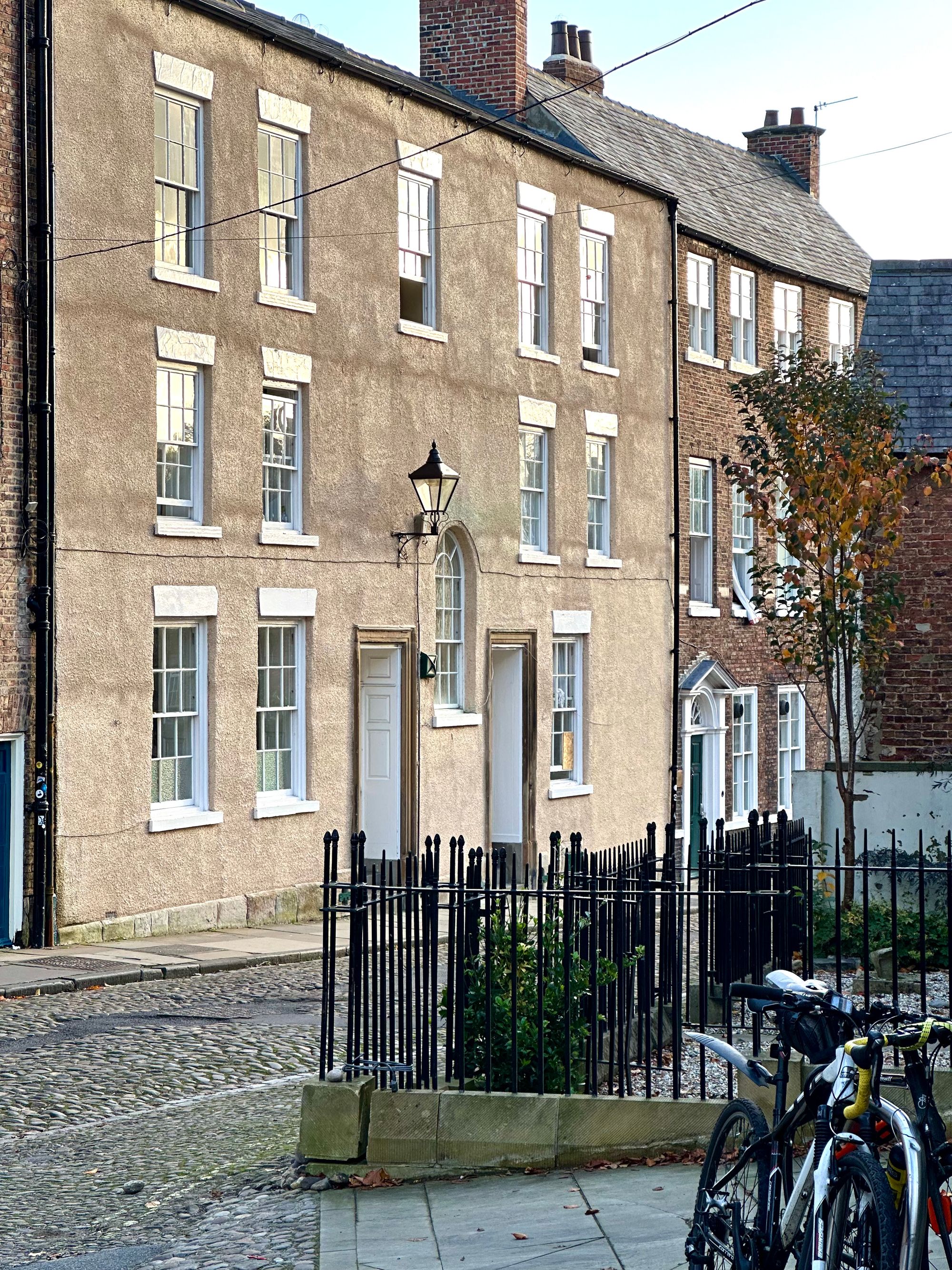








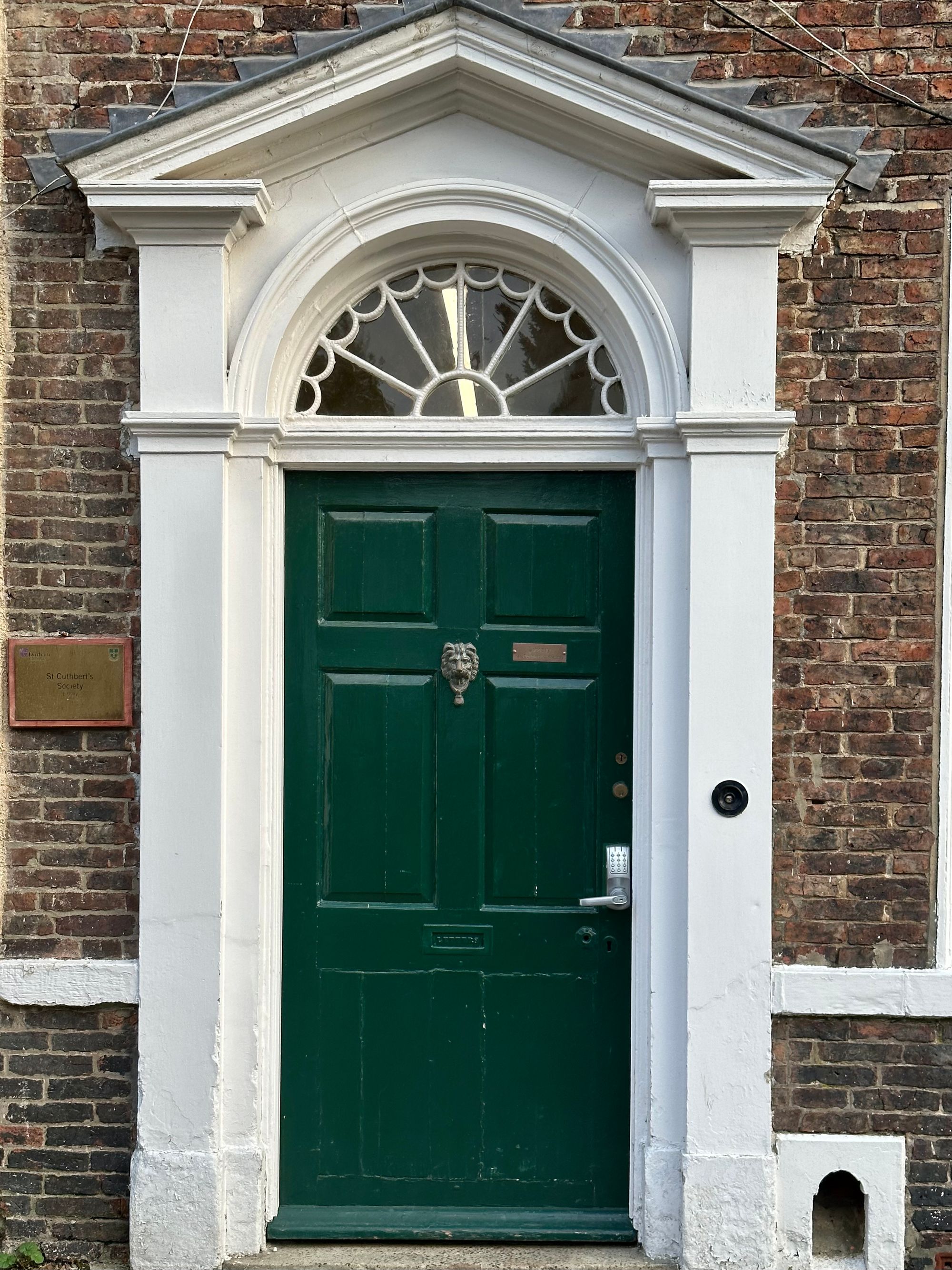
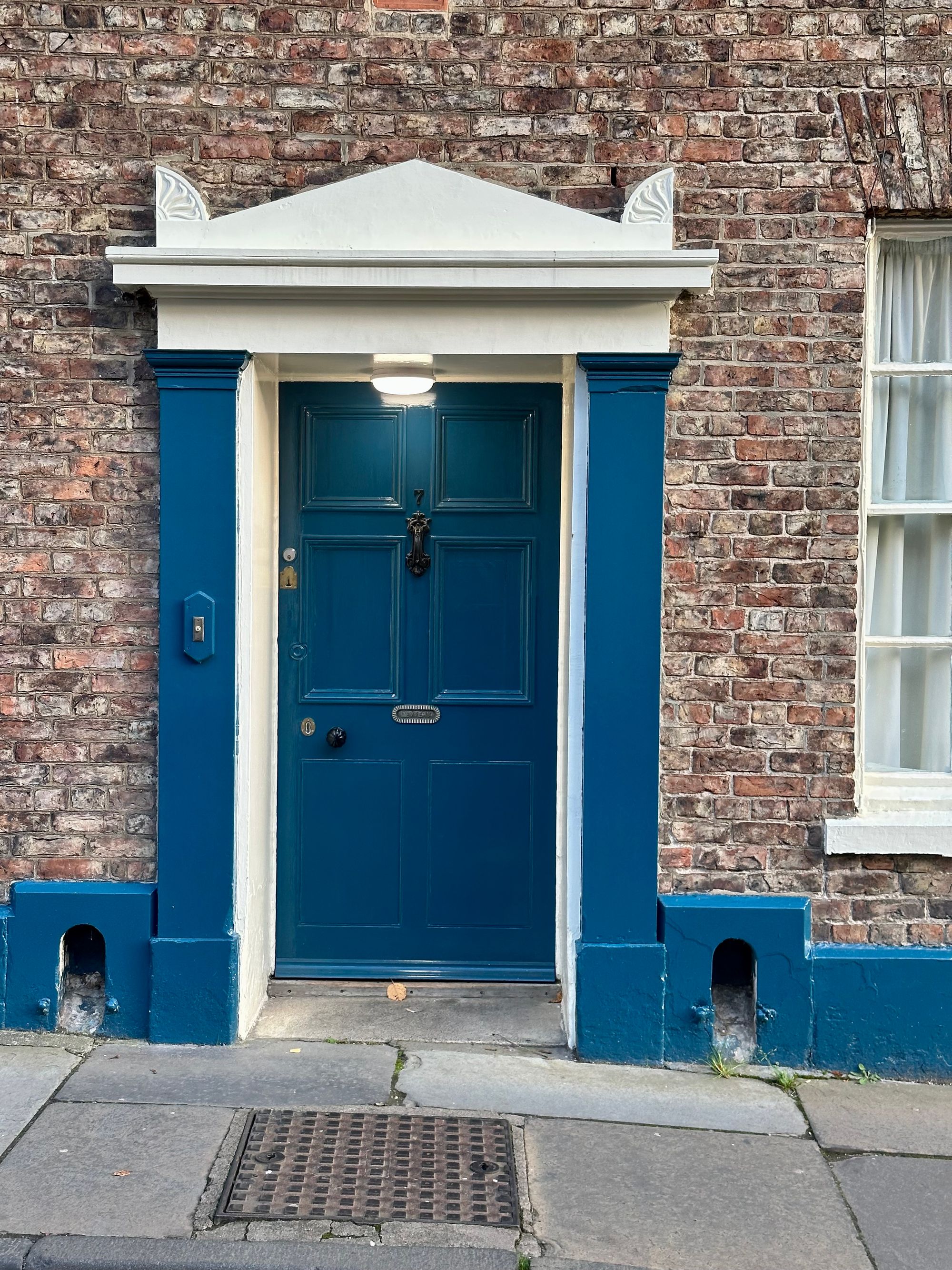
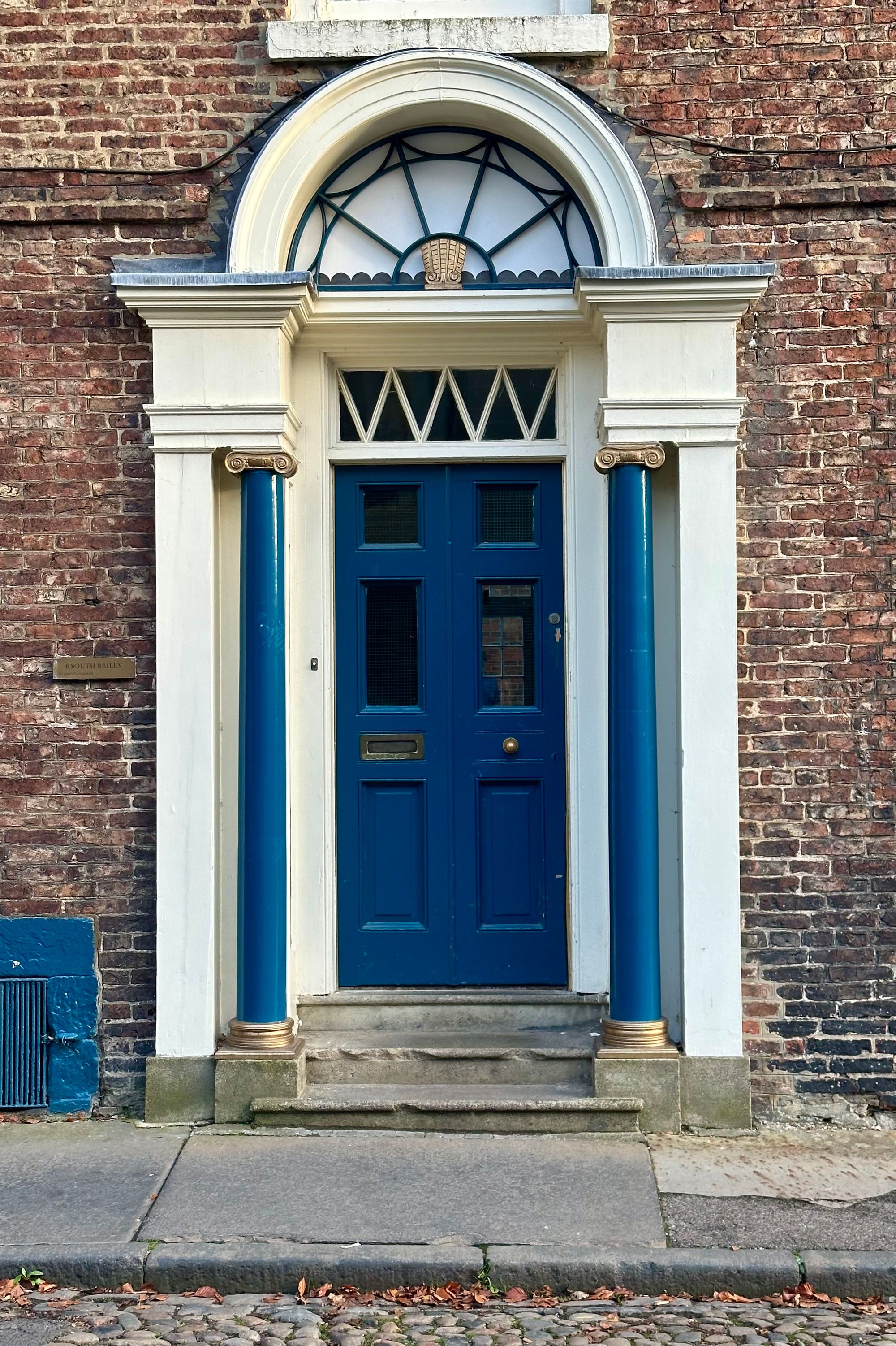
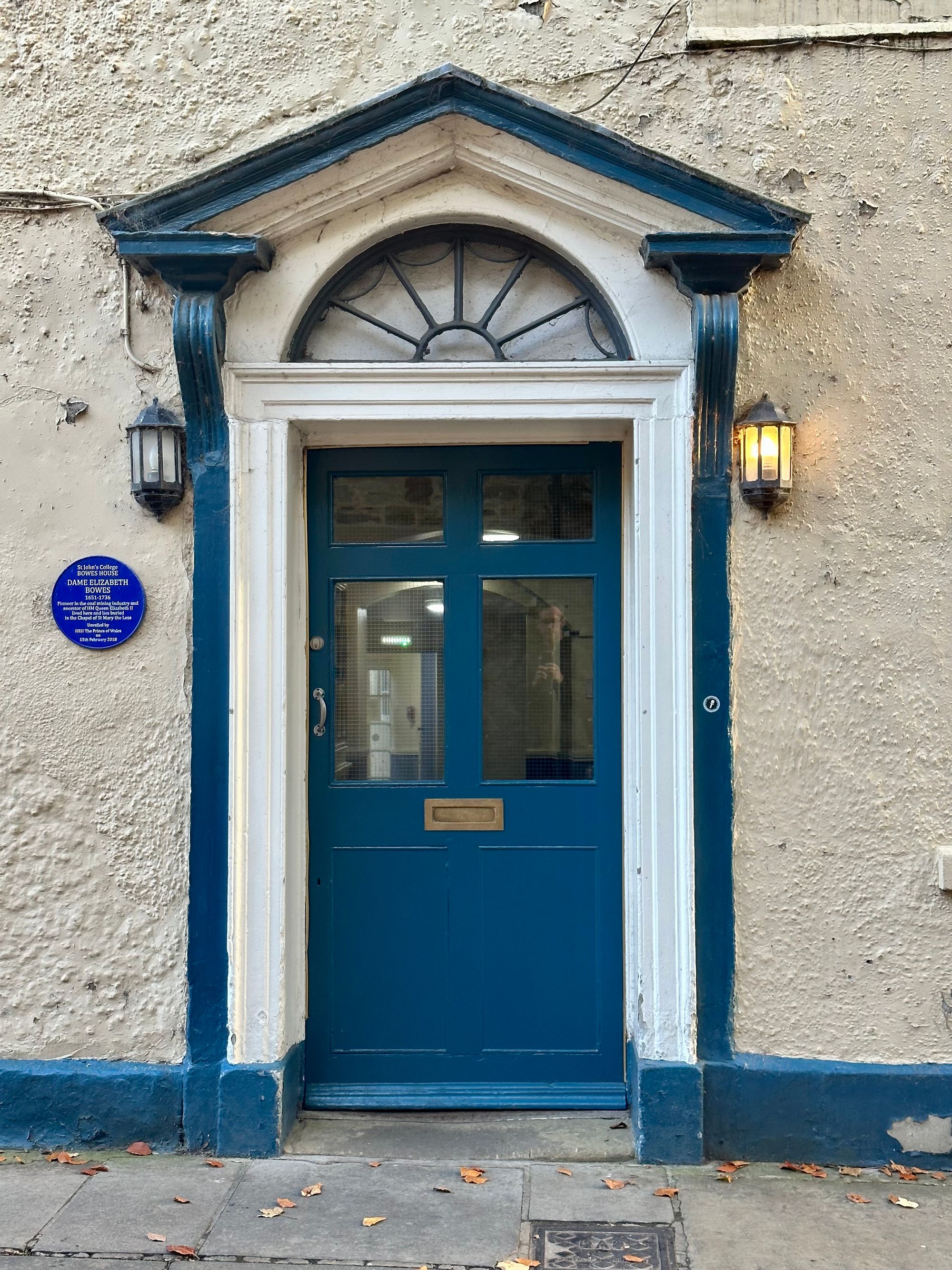

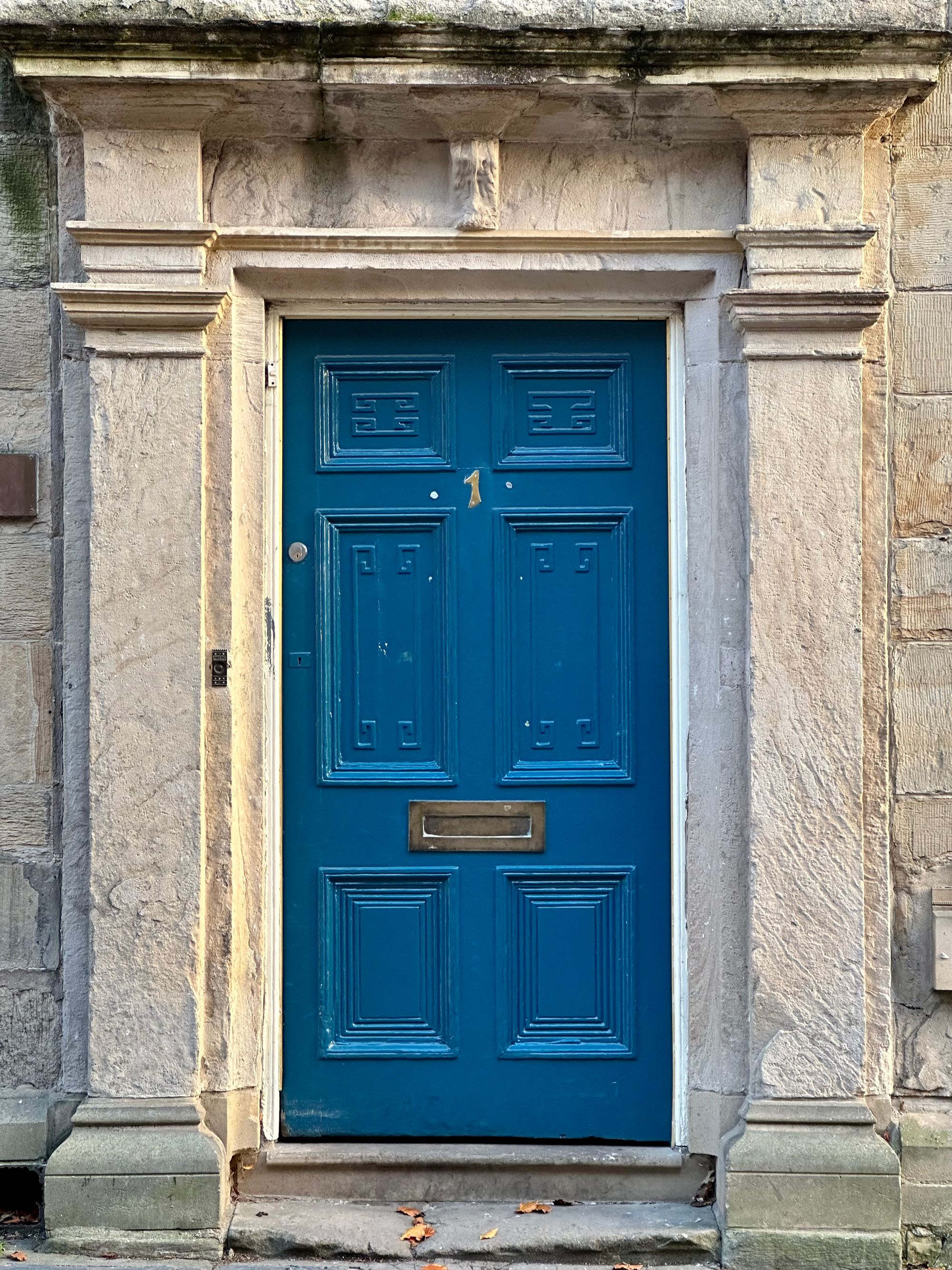




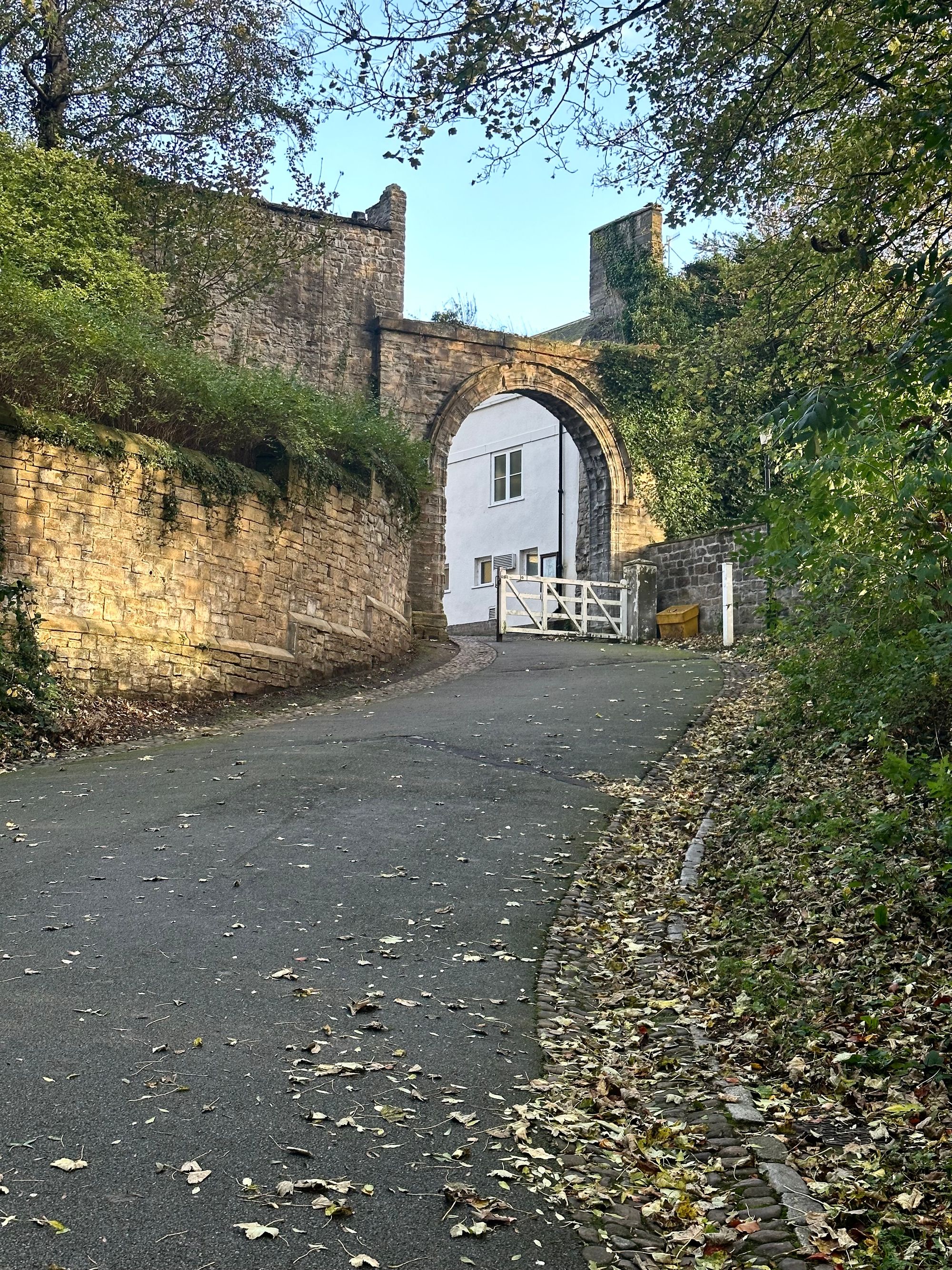

I lodge at the Durham Grange CAMC which is a little bit out of town. I took the van and parked up inside the city - but I recommend getting the bus from that site. Parking and driving around Durham isn't the best.

My camper-van-camino to these parts was captured on Polarsteps live for members.
All subscribers can now join in the journey by clicking below. There's a few easter eggs in there (Oh yeah: Rosslyn!).







Bard

Bard is Google's Artificial Intelligence (AI) chatbot. When I asked Bard to tell me about Andy Marshall's Genius Loci Digest - this is how it replied:
Andy Marshall's Genius Loci Digest is a weekly newsletter that shares his travels around Britain in his camper van. He captures his travels through the material culture, which he defines as "the physical manifestation of a place's history, culture, and identity."
The newsletter is a great way to learn about the history and culture of Britain, as well as to see some amazing scenery. Marshall's photography is stunning, and his writing is engaging and informative.
If you're interested in learning more about Britain, or if you just enjoy beautiful photography, I highly recommend subscribing to Andy Marshall's Genius Loci Digest.
Here are some of the things you can expect to see in the newsletter:
* Photos of historical sites, such as castles, abbeys, and churches
* Photos of natural scenery, such as mountains, forests, and beaches
* Photos of everyday life in Britain
* Articles about the history and culture of Britain
* Tips for traveling in Britain
Become a Member
It takes a day a week to produce this digest. With your support, I’m able to keep this digest free and public facing. 📸🏛🚐
Support this digest and get access to a world of immersive content. Click the box below to check out the membership options:

Gift a Membership
Gift a membership to somebody else. They will receive an email with a message from you, and instructions on how to activate it. Gift Memberships can last indefinitely or can be limited to 12 months.
Free Memberships
I have a limited number of free memberships available for students studying heritage, tourism, architecture, photography, building conservation, history of art, archaeology. Also students studying the built environment and its impact on mental health and wellbeing. If you'd like to apply, drop me a line with your details.
Really recommend following Andy capturing architecture & urban design across the UK, reminds me of history trips while studying, guided by the formidable arch historian Prof James Stevens Curl https://t.co/N256WxUUyc
— Dr Gill Armstrong MCIAT ARB ❤️🏙📈 (@arch_lintel) January 3, 2023












Member discussion